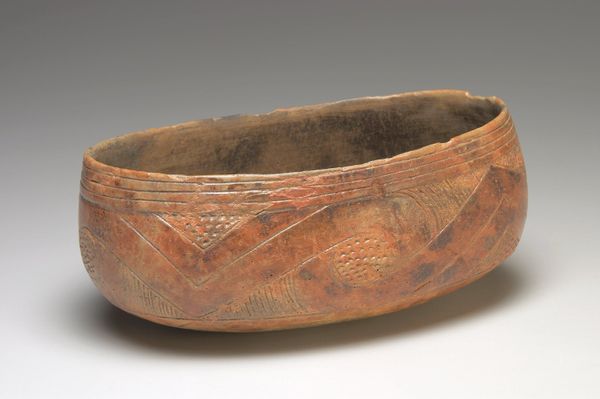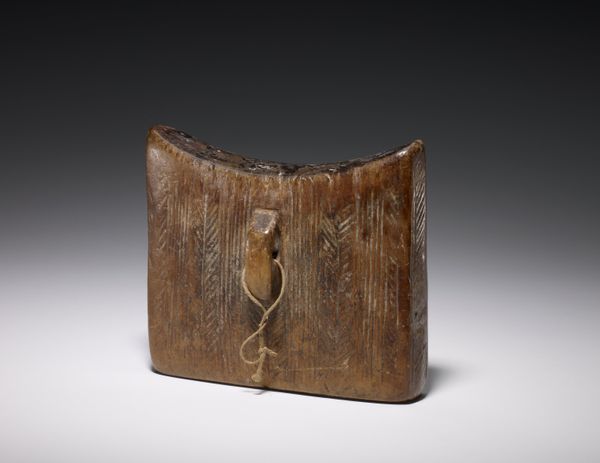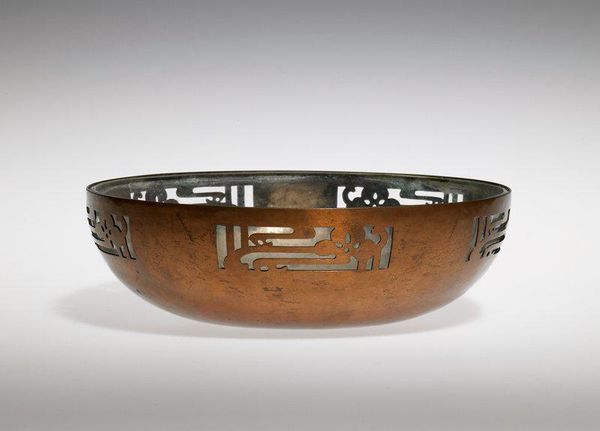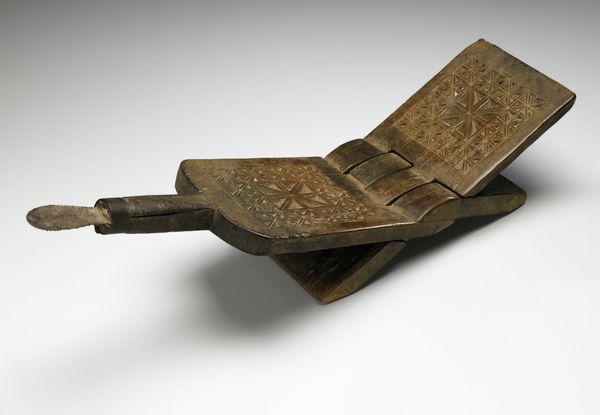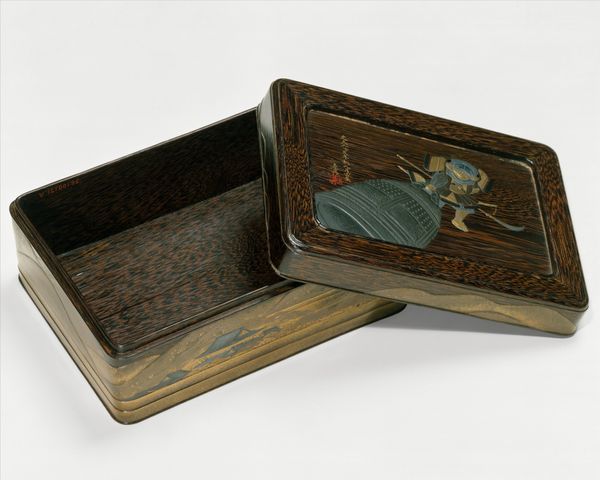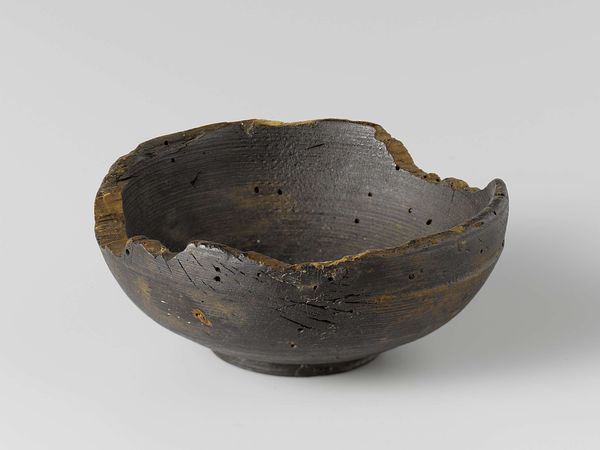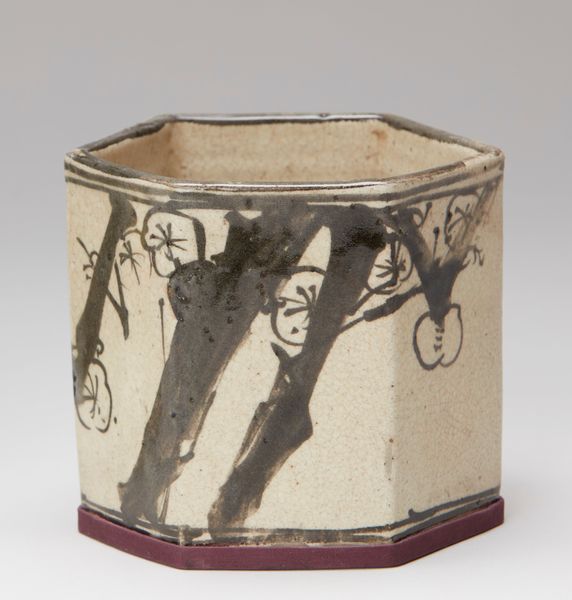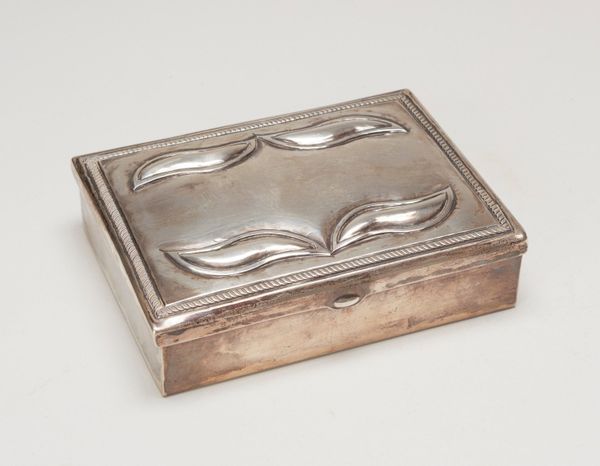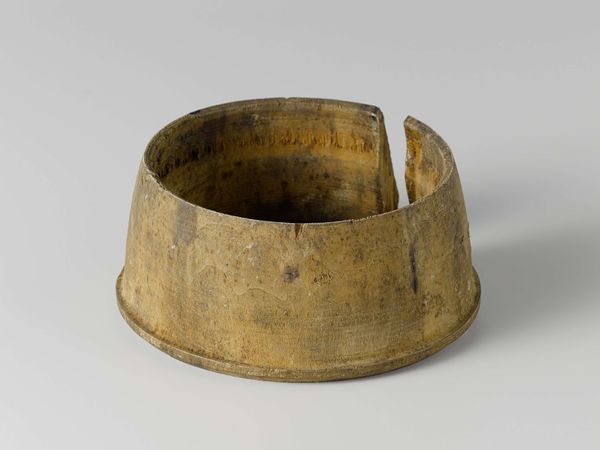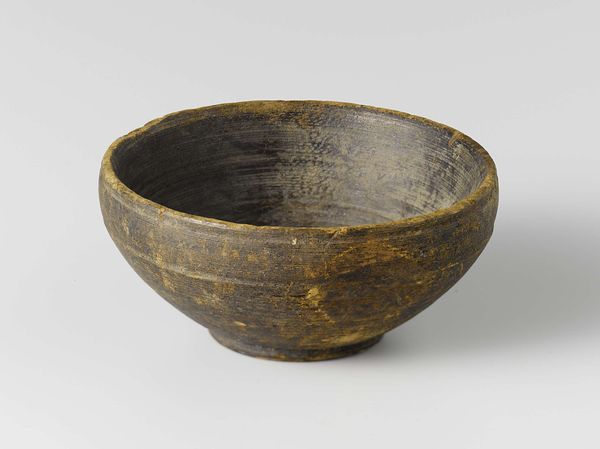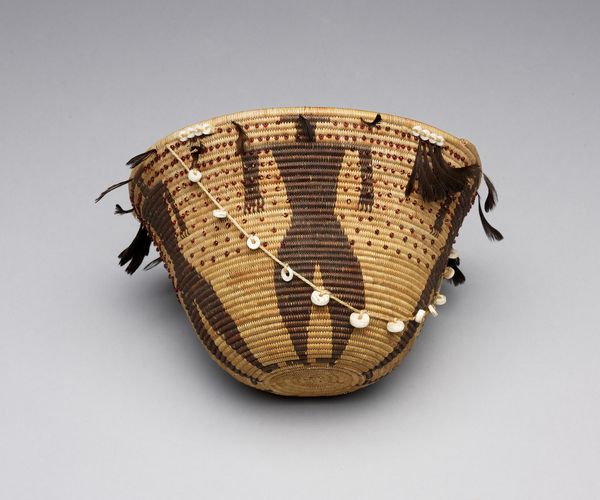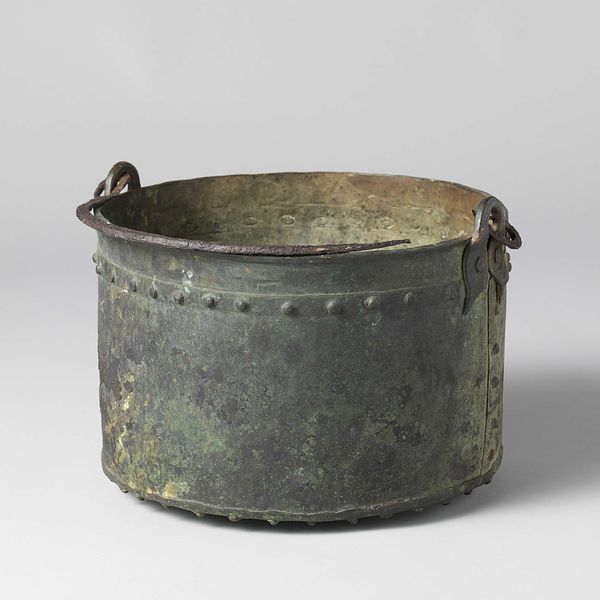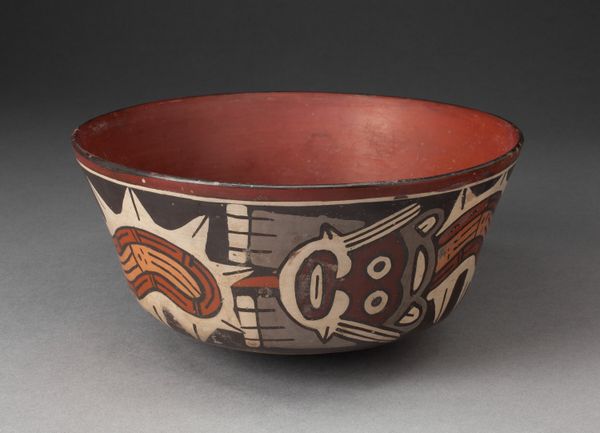
ceramic, earthenware
#
asian-art
#
ceramic
#
japan
#
earthenware
#
stoneware
Dimensions: 2 11/16 x 9 13/16 x 8 15/16 in. (6.83 x 24.92 x 22.7 cm)
Copyright: No Known Copyright
Curator: Here we have a ceramic plate, dating from around the 20th century, fashioned by the hand of Kitaōji Rosanjin. Its unconventional shape immediately grabs attention, doesn’t it? Editor: It does. My first impression is one of muted earth tones and rustic simplicity. It seems to echo the transience of nature and hints at a sense of organic imperfection through the use of coarse earthenware and those black reeds. Curator: Rosanjin was a fascinating figure, esteemed as both an artist and a restaurateur. He saw dining as a total aesthetic experience and created pottery specifically to enhance his culinary creations. Editor: Ah, so its shape as a sectioned fan likely holds some deeper connection to dining etiquette? Curator: Precisely. Rosanjin was reviving older techniques for use with elite meals. He aimed for an updated version of Japanese stoneware, balancing functional beauty with artful design meant to honor the food. Notice the black stylized reeds on the beige interior? Editor: They almost seem like ink brushstrokes, providing both pattern and a subtle, meditative element. The form has a powerful interplay of positive and negative space as well, as well as horizontal and vertical orientation: a lot is packed into a seemingly modest utilitarian dish. Curator: And the choice of stoneware speaks volumes, grounding this in a longer ceramic history dating back to the medieval era in Japan, evoking tradition while catering to a modernist aesthetic. Its acquisition by museums elevated the daily ware into high art objects for a broader cultural audience. Editor: I agree. Viewing this piece, I'm reminded how humble objects can, when carefully considered, truly elevate our experiences with the world, particularly in regard to the natural world so subtly invoked through materials, texture and imagery. Curator: Rosanjin understood the potency of simple objects and their potential for transformation when embraced by art and culture. A lasting demonstration that utilitarian design can speak volumes.
Comments
minneapolisinstituteofart almost 2 years ago
⋮
Kitao_ji Rosanjin is considered by many to be the premier Japanese potter of the twentieth century. He had already earned a reputation as a talented calligrapher when he became interested in tableware through his association with the renowned Tokyo restaurant Hoshigaoka. He experimented widely with traditional styles, and was adept at reproducing the spirit of historic ceramics. Here, Rosanjin based his design on a type of ceramic originally championed by the tea master Furuta Oribe (1544-1615), which featured innovative shapes irregularly decorated by dipping a portion of the form into a glaze mixture. After firing, these brilliant, grass green areas contrasted nicely with casual paintings in iron brown.
Join the conversation
Join millions of artists and users on Artera today and experience the ultimate creative platform.
